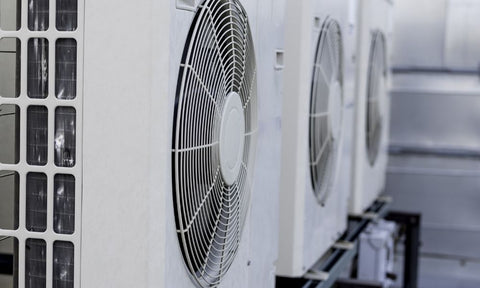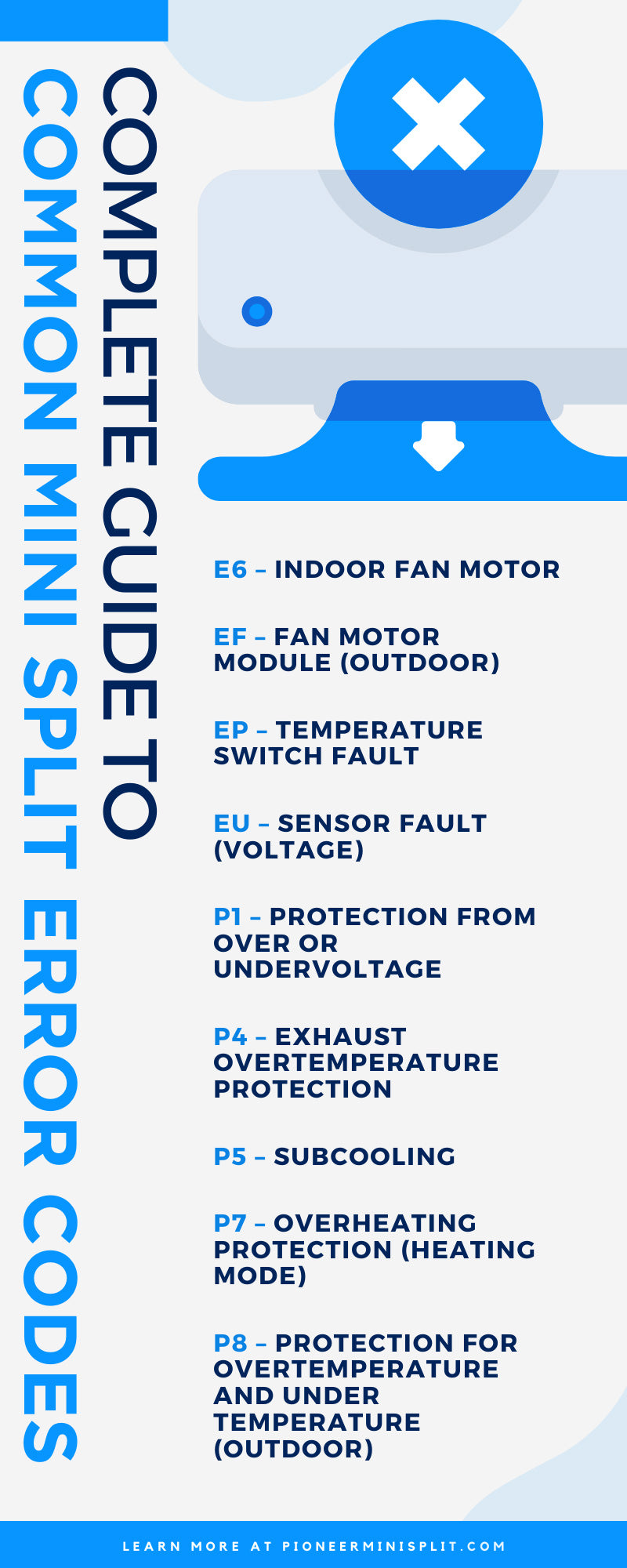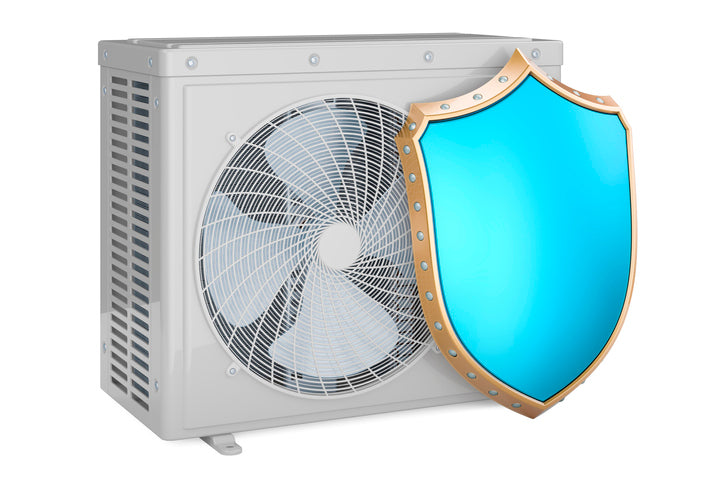Complete Guide To Common Mini Split Error Codes

Error codes are useful since they let us know something isn’t right with the mini split system. Still, they’re also concerning if we aren’t sure what they mean or how to deal with each type of air conditioner error code. In this article, we’ll look at the complete guide to common mini split error codes and what to do with each one. First, let’s talk about what a mini split system is.
Mini Split Systems
Mini split systems allow you to control the temperature in individual rooms. Unlike a central air system that involves ductwork, mini splits use no ductwork and are hooked up in the rooms that need temperature control.
They work with two units: one outdoor compressor and an indoor handling unit. Mini splits are an excellent solution for smaller spaces, individual areas and rooms, and if there is a desire to avoid ductwork.
What Are Error Codes?
Error codes are installed in a mini split system to alert the homeowner that something has gone wrong. Each Pioneer mini split error code represents an issue, and once you learn the codes, it’s easy to quickly assess the situation. Sometimes, a system seems to be running fine, and still, an error code pops up. Don’t ignore it. It’s a warning that if the error isn’t taken care of, the system may fail.
Quantum Series Error Codes Include:
- EH 00 - Indoor unit EEPROM error
- EH 0A - Indoor unit EEPROM parameter error
- EL 01 - Communication error between indoor unit and outdoor units
- EH 03 - Indoor fan speed error (DC motor)
- EH 60 - Indoor room temperature sensor error (T1)
- EH 61 - Indoor coil temperature sensor error (T2)
- EL 0C - Refrigerant leakage detection (Cooling mode only)
- PC 08 - Outdoor current overload protection
- EC 53 - Outdoor ambient temperature sensor error (T4)
- EC 52 - Outdoor coil temperature sensor error (T3)
- EC 54 - Compressor discharge temperature sensor error (T5)
- EC 51 - Outdoor unit EEPROM error
- EC 07 - Outdoor unit fan speed error (DC fan motor)
- PC 00 - Inverter module IPM error
- PC 01 - High or Low voltage protection
- PC 0L - Outdoor low ambient temperature protection
- PC 04 - Compressor drive error
- EH 0b - Communication error between main control board and display board
Diamante Series Mini Split Error Codes
-
E0 - IDU & ODU Communication failure
- E1 - IDU Room Temperature sensor failure.(IDU RT failure)
- E2 - IDU Coil temperature sensor failure.(IDU IPT failure)
- E3 - ODU Coil temperature sensor failure. (OPT) ODU coil sensor and ODU PCB
- E4 - AC Cooling system abnormal
- E5 - IDU/ODU mismatched failure (specially performance test on the production line)
- E6 - IDU PG Fan motor / DC fan motor works abnormal(IDU failure)
- E7 - ODU Ambient Temperature sensor failure ODU ambient sensor and ODU PCB.
- E8 - ODU Discharge Temperature sensor failure. ODU discharge sensor and ODU PCB.
- E9 - IPM / Compressor driving control abnormal. ODU PCB , compressor, etc.
- EA - ODU Current Test circuit failure ODU PCB broken?
- Eb - The Communication abnormal of Main PCB and Display board(IDU failure)
- EE - ODU EEPROM failure.
- EF - ODU DC fan motor failure.
- EU - ODU Voltage test circuit abnormal.
- P0 - IPM module protection. ODU PCB
- P1 - Over / under voltage protection.
- P2 - Over current protection.
- P4 - ODU Discharge pipe Over temperature protection.
- P5 - Sub-cooling protection on Cooling mode.
- P6 - Overheating protection on Cooling mode.
- P7 - Overheating protection on Heating mode.
- P8 - Outdoor Over temperature/Under temperature protection.
- P9 - Compressor driving protection (Load abnormal).
- PA - Multi-split conflict code (one indoor unit tries to heat while another tries to cool)
- F0 - Infrared Customer feeling test sensor failure. (IDU failure)
- F1 - Electric Power test module failure. (IDU failure)
- F2 - Discharge temperature sensor failure. PROTECTION.
- F3 - ODU coil temperature failure PROTECTION.
- F4 - Cooling system gas flow abnormal PROTECTION.
- F5 - PFC PROTECTION Please check the troubleshooting for detail.
- F6 - The Compressor lack of phase / Anti-phase PROTECTION.
- F7 - IPM Module temperature PROTECTION Please check the troubleshooting for detail.
- F8 - 4-Way Value reversing abnormal.. Please check the troubleshooting for detail.
- F9 - The module temperature test circuit failure. ODU PCB
- FA - The compressor Phase-current test circuit failure.
- Fb - Limiting/Reducing frequency for Over load protection on Cooling/Heating mode.
- FC - Limiting/Reducing frequency for High power consumption protection.
- FE - Limiting/Reducing frequency for Module current protection ( phase current of compressor).
- FF - Limiting/Reducing frequency for Module temperature protection.
- FH - Limiting/Reducing frequency for Compressor driving protection.
- FP - Limiting/Reducing frequency for anti- condensation protection.
- FU - Limiting/Reducing frequency for anti-frost protection.
- Fj - Limiting/Reducing frequency for Discharge over temperature protection.
- Fn - Limiting/Reducing frequency for ODU AC Current protection.
- Fy - Gas leakage protection Please check the troubleshooting for detail.
- Bf - TVOC sensor failure(IDU failure, optional)
- bc - PM2.5 sensor failure(IDU failure, optional)
- bj - Humidity sensor failure. (IDU failure)
- CL - Filter cleaning reminder, it will go away on its own after some time.
The list is long, and it’s helpful to keep it near the mini split system so you can check error codes when necessary.
Pioneer Mini Split Troubleshooting Error Codes
Even if you memorize all error codes, you’ll still need to know what to do when one makes its presence known. The first thing you want to do is figure out how to make the error code go away. This won’t fix the problem, but it’s the first step in clearing everything and getting the mini split to run efficiently again.
To clear the error code, turn the unit off, then turn off the breaker. Fix the issue and turn the unit back on. If you aren’t ready to fix the problem, you can turn the unit back on anyway, after a few minutes, and see if the air conditioner error code goes away. If the problem is still there, the code will come back.
After clearing the code, whether it’s a professional or yourself, it’s time to check for the three most common reasons for error codes to show up. Although there are many codes, they can all stem from one of the following reasons:
- Problem with the wiring.
- A faulty sensor
- A faulty PCB
To troubleshoot the wiring and sensors, simply check all wiring connections and sensors to see if there’s a malfunction. Another possibility is the computer board (PCB) is not reading the correct voltage from the sensors. That causes an error code as well.
Here’s a list of the possible sensors to check:
- Indoor room temperature (T1)
- Evaporator temperature (T2)
- Condenser temperature (T3)
- Outdoor ambient temperature (T4)
- Compressor discharge temperature (T5)
To check a sensor, use the manual the system came with to locate the sensor you need to check. Look at the sensor and the wiring for any possible shorts or breaks. Also, check for resistance. Unfortunately, sometimes a unit was wired wrong from the beginning, and after some time goes by, the mini split error codes begin to alert.
If all sensors and wiring seem fine, this usually points to the PCB, and it may need replacing. Unfortunately, many of these repairs are not suitable for DIY. Call your technician right away to get your mini split system running efficiently and safely.
Perform Regular Maintenance
Schedule regular maintenance with your HVAC professional twice a year. This is often done in the spring to prepare for summer, then again in the fall to prepare for the colder months. An HVAC technician will do the following at a mini split system checkup:
- Clean filters and replace if necessary.
- Clear out any debris or obstacles in the way of the outdoor unit.
- Check all valves and tighten or replace when needed.
- Clean the coils.
- Check for leaks of refrigerant.
You can help maintain your system between visits by keeping debris, overgrown landscaping, and snow away from the outdoor unit. Check filters occasionally when the unit has been working hard. Keep an eye out for wiring, tubing, or valves that don’t look right. Be aware of odd smells coming from the unit, both indoors and out.
Don’t ignore odd sounds, either. Contact your HVAC professional if your senses notice anything unusual. And of course, if the temperature isn’t responding as it should, schedule a visit with your technician.
Mini split systems are the perfect solution for the following types of areas:
- Smaller homes that don’t need a large central unit.
- Single rooms that aren’t heated or cooled efficiently.
- New additions without ductwork.
- New builds when the owner is choosing no ductwork.
As you heat and cool your home, keep the system maintained and use the complete guide to common mini split error codes when needed. In return, a mini split will give you years of comfort with an efficient system.
At Pioneer Mini Split, we take pride in offering the highest quality mini split systems. We offer a floor mini split as well as all other mini split options. Browse our online store, or contact us for more information.







